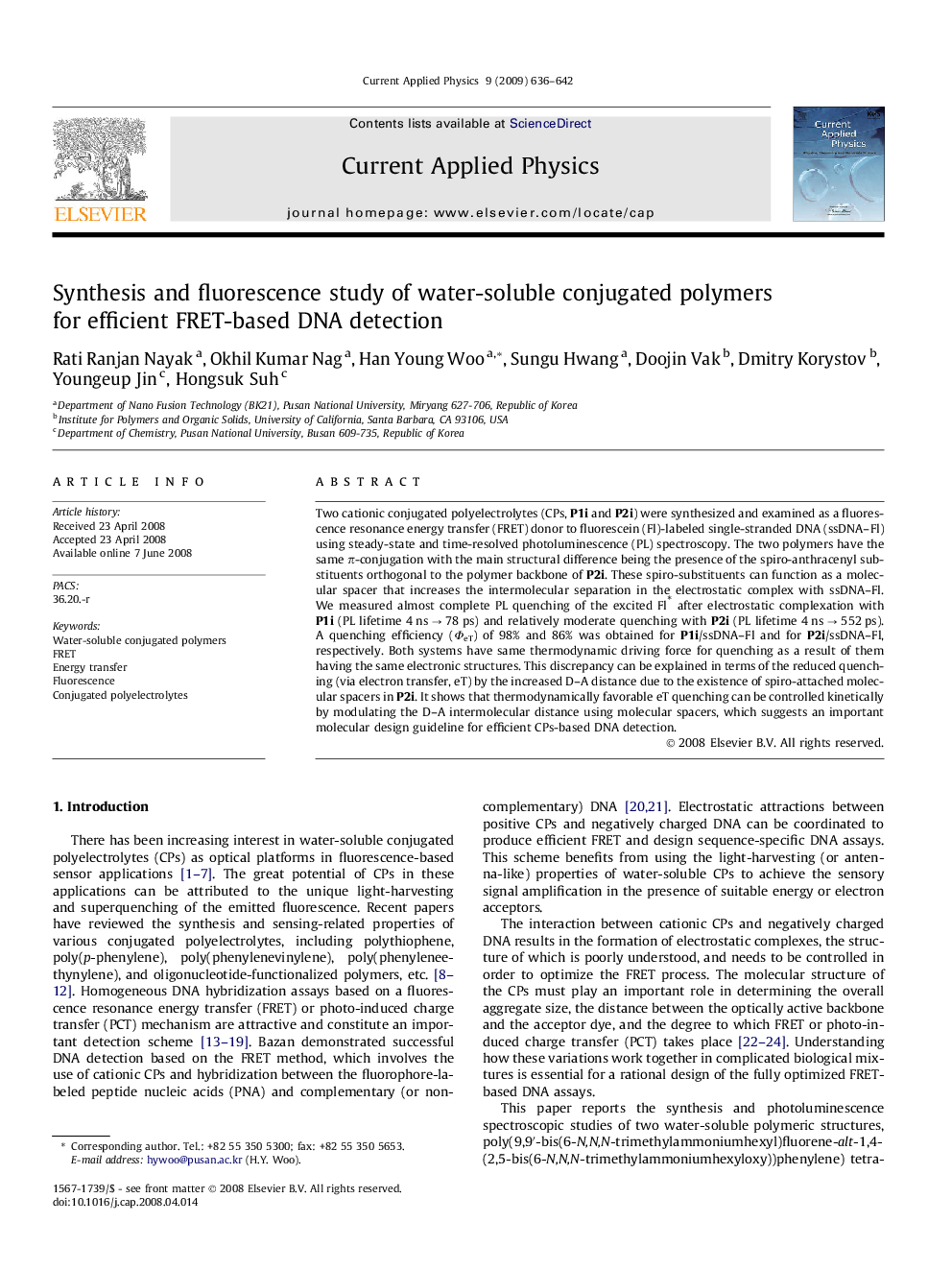| کد مقاله | کد نشریه | سال انتشار | مقاله انگلیسی | نسخه تمام متن |
|---|---|---|---|---|
| 1788224 | 1023464 | 2009 | 7 صفحه PDF | دانلود رایگان |

Two cationic conjugated polyelectrolytes (CPs, P1i and P2i) were synthesized and examined as a fluorescence resonance energy transfer (FRET) donor to fluorescein (Fl)-labeled single-stranded DNA (ssDNA–Fl) using steady-state and time-resolved photoluminescence (PL) spectroscopy. The two polymers have the same π-conjugation with the main structural difference being the presence of the spiro-anthracenyl substituents orthogonal to the polymer backbone of P2i. These spiro-substituents can function as a molecular spacer that increases the intermolecular separation in the electrostatic complex with ssDNA–Fl. We measured almost complete PL quenching of the excited Fl∗ after electrostatic complexation with P1i (PL lifetime 4 ns → 78 ps) and relatively moderate quenching with P2i (PL lifetime 4 ns → 552 ps). A quenching efficiency (ΦeT) of 98% and 86% was obtained for P1i/ssDNA–Fl and for P2i/ssDNA–Fl, respectively. Both systems have same thermodynamic driving force for quenching as a result of them having the same electronic structures. This discrepancy can be explained in terms of the reduced quenching (via electron transfer, eT) by the increased D–A distance due to the existence of spiro-attached molecular spacers in P2i. It shows that thermodynamically favorable eT quenching can be controlled kinetically by modulating the D–A intermolecular distance using molecular spacers, which suggests an important molecular design guideline for efficient CPs-based DNA detection.
Journal: Current Applied Physics - Volume 9, Issue 3, May 2009, Pages 636–642